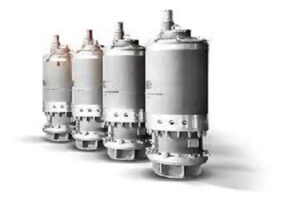
Mutual funds are an ideal investment vehicle for fulfilling most of your financial goals in life. Financial Goals can be Tax Saving, Wealth Creation, Retirement Planning, Children’s Education, etc.
For investors having a financial goal of saving taxes, AMCs in India offer mutual fund schemes known as Equity Linked Savings schemes (ELSS).
ELSS schemes are also called tax saving mutual funds, as investments made by individuals and HUFs in these schemes are eligible for tax deductions under the Section 80C of Income Tax Act.
What are the features of ELSS?
- ELSS schemes would invest at least 80 percent of its AUM in equity and equity-linked securities (in accordance with Equity Linked Saving Scheme, 2005 notified by the Ministry of Finance).
- While investing in equities, ELSS schemes would diversify the total investments with several equities in different market caps, sectors and themes (As per regulations, ELSS schemes cannot have more than 10 percent of its NAV in the equity shares and equity related instruments of a single company)
- These tax saving mutual funds have a fixed lock-in of three years with no maximum tenure.
- You can claim for tax deductions by investing in ELSS schemes under the Section 80C of Income Tax Act, and save up to ₹1,50,000 in a year depending on the tax bracket you fall in.
What are the tax benefits on investment in ELSS?
- As mentioned above, you can claim for tax deductions by investing in ELSS schemes under the Section 80C of Income Tax Act, and save up to ₹1,50,000 in a year depending on the tax bracket you fall in.
- For example – If you fall under the tax bracket of 30%, then in a year you can save taxes of up to ₹46,800 by investing ₹1,50,000 in a year. (₹1,50,000 X 30% = ₹46,800)
- The tax deduction under Section 80C will be cumulative for ELSS and other tax saving investments like PPF, NSC, etc.
- On redemption of units after the lock-in of 3 years, long term capital gain (LTCG) is taxed at 10% on the gains exceeding ₹ 1 lakh without indexation.
Comparison of ELSS with other tax saving investments in India:
| Investment | % Expected Returns | Lock-in Period | Tax on Return |
| 5 Year Bank FDs | 6% to 7% | 5 years | Yes |
| PPF | 7% to 9% | 15 years* | No |
| NSC | 7% to 9% | 5 years | Yes |
| NPS | 7% to 10% | Up to Retirement Age | Partially Taxable |
| ELSS | 12% to 15%** | 3 years | Partially Taxable |
We can clearly see that the tax saving mutual funds (ELSS) offer the dual benefit of higher returns and lower lock-in period as compared to other alternatives.
How to select the best mutual funds in India for saving taxes?
You can follow these 5 crucial steps to select best mutual funds in India for saving taxes:
-
Be aware of your risk appetite.
An individual’s risk appetite may depend on his income, expenses, liabilities, dependents, taxability, age and willingness.
You should first determine your risk-taking ability and willingness. Most individuals make investments in tax saving mutual funds on suggestions from friends or colleagues or seeing it on advertisements without understanding the risk defined for the mutual fund scheme.
You can evaluate the best mutual funds in India based on investment objectives and investment strategies of different schemes. It helps in understanding what to expect from the scheme and if it’s suitable for your risk profile. You should read all the scheme related documents thoroughly before investing.
2. Do appropriate research.
Investing in equity mutual funds such as tax saving mutual funds on the gut feeling or on the basis of past performance can be extremely risky.
During market boom, most funds tend to perform well. And when the market corrects, schemes you invest in may give negative returns. Also, a top performing mutual fund may not remain top performer forever or near the other top performers. Hence, investing without proper research may not be a wise approach.
You may use the data available in scheme documents such as Variance, Standard Deviation, Beta, Mod Duration, Sharpe Ratio, Treynor Ratio, Jenson’s Alpha, Tracking Error, etc to measure the risk and expected returns of investment in a mutual fund and for comparison with other mutual funds.
3. Selecting investment options appropriately.
Tax saving mutual funds (ELSS) offer two investment options SIP and Lump Sum.
Choose an investment option based on your capital size:
SIP – You may choose SIP to avail the benefits of rupee cost averaging, it helps in investing and building wealth in the long-term.
Lump Sum – You may choose a Lump Sum investment on a large inflow like inheritance, yearly bonus from employee, etc.
4. Keep an eye on taxes and expense loads.
Both taxes and expense loads reduce investment returns. You should consider these two aspects during repurchases/redemptions and must assess the implications of capital gains tax and exit loads. You can even evaluate the best mutual funds in India based on their expense loads and choose ELSS schemes that offer decent returns with lower expenses.
5. Don’t invest without proper guidance.
There are thousands of mutual funds available for investment resulting in a problem of choice. Further, not everyone has the required knowledge or time of doing their own research and Portfolio rebalancing.
Hence, it’s recommended you consult a AMFI Certified Mutual Fund Advisor who has the expertise and knowledge to assist you with appropriate scheme selection, procedure to apply and withdraw from a mutual fund scheme and rebalancing your Portfolios on regular time intervals.
3 best mutual funds in India to save taxes for 2022:



*Past performance is not indicative of future return *Returns are annualized and in % figures *Performance is as on 30-08-22

